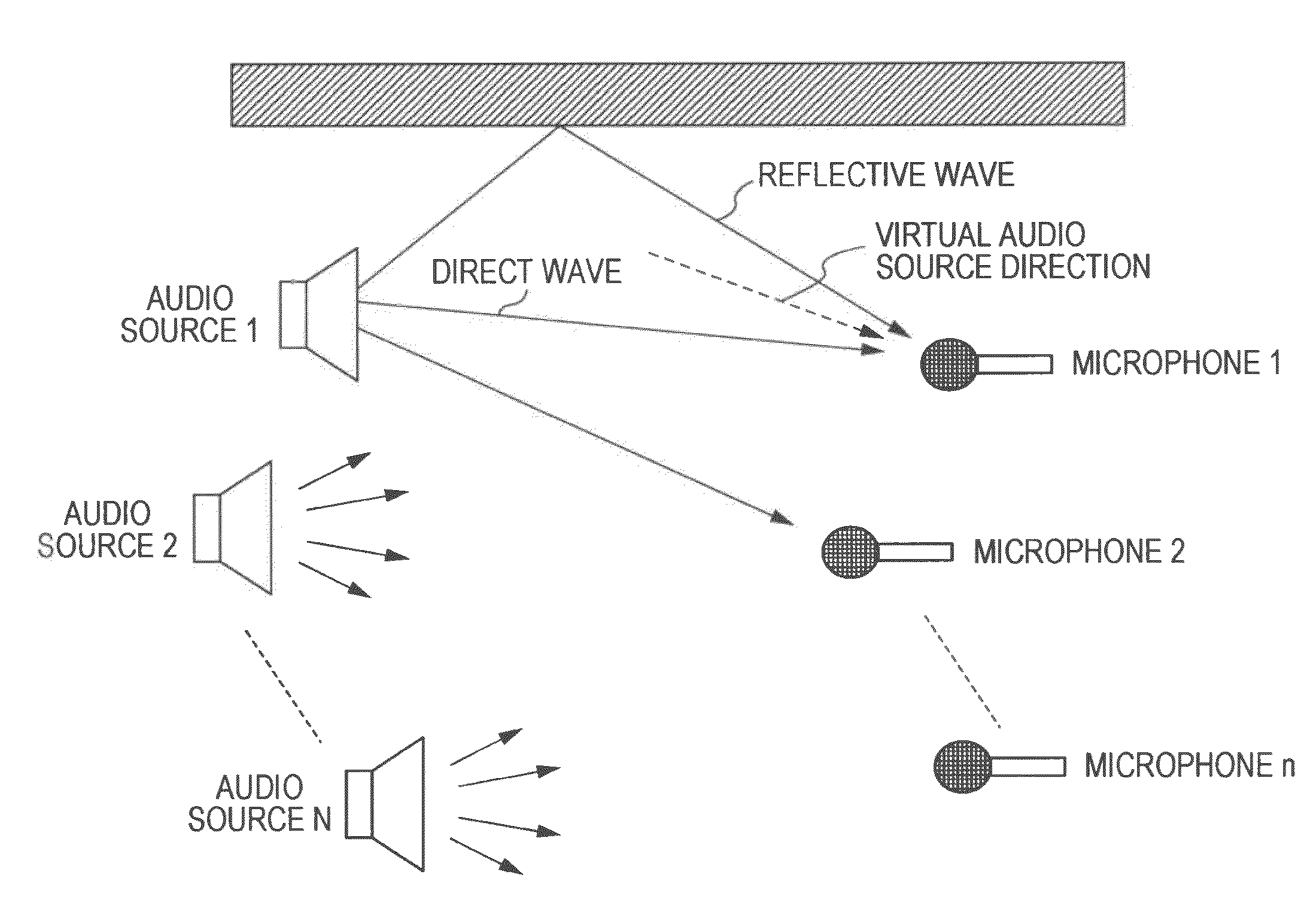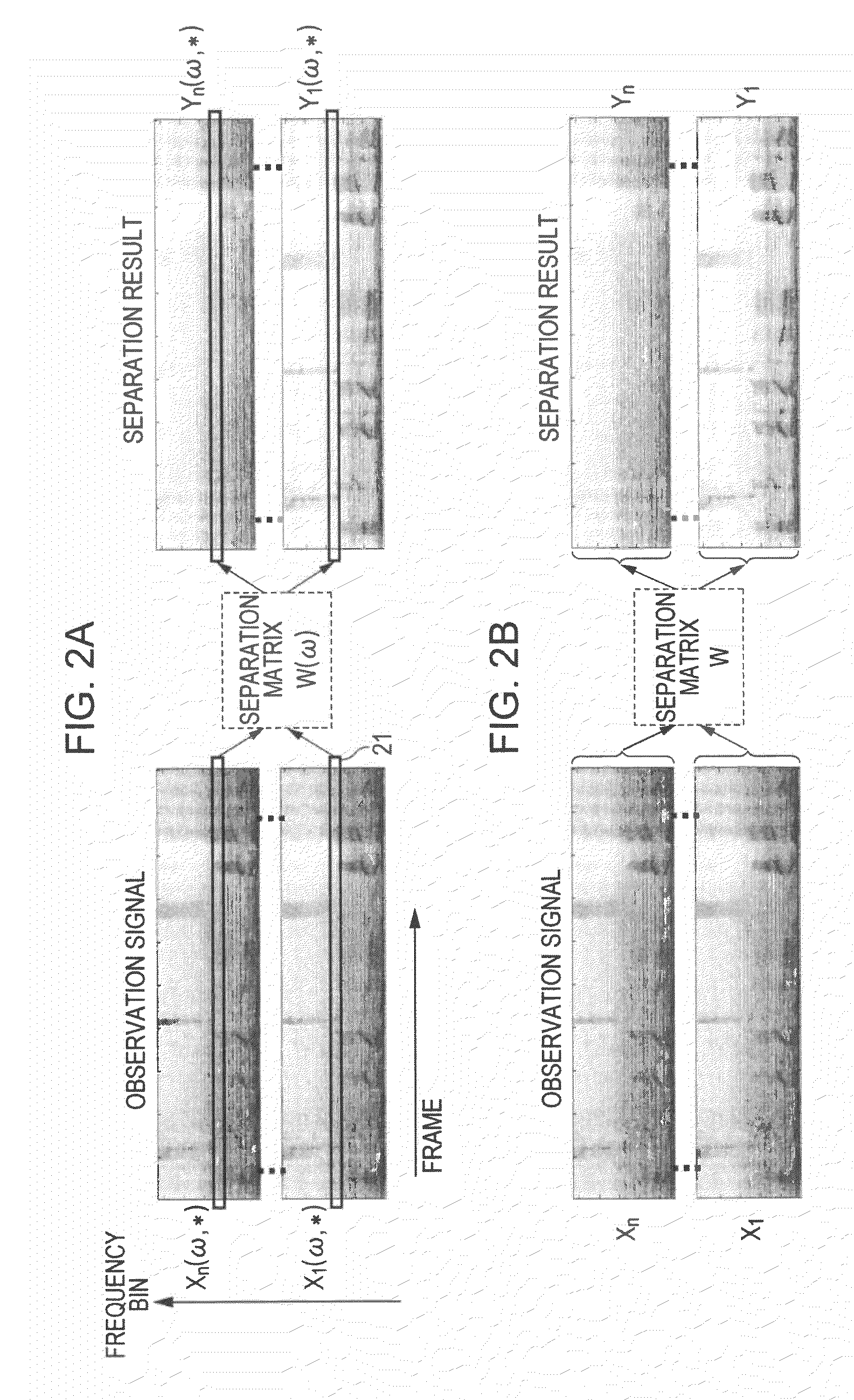Signal processing device, signal processing method and program
a signal processing and signal processing technology, applied in signal processing, speech analysis, instruments, etc., can solve the problems of large computational cost in comparison to the separation of source data by ica described above, large computational cost proportional to the number of learning loops, and large computational cost for one learning loop, so as to reduce the computational cost of a learning process in the second separation process, the effect of reducing the computational cos
- Summary
- Abstract
- Description
- Claims
- Application Information
AI Technical Summary
Benefits of technology
Problems solved by technology
Method used
Image
Examples
Embodiment Construction
[0110]Hereinbelow, a signal processing device, a signal processing method, and a program will be described in detail with reference to drawings. The description will be provided according to the following subjects.
[0111]1. Overview of a Signal Process of the Present Invention
[0112]2. Specific Embodiment of a Signal Processing Device of the Present Invention
[0113]2-1. Composition of the Signal Processing Device of the Present Invention
[0114]2-2. Process of the Signal Processing Device of the Present Invention
[0115]3. Modified Example of the Signal Processing Device of the Present Invention
[0116]3-1. Modified Example using Another Algorithm in a Signal Separation Process of a Second Stage
[0117](1a) EASI
[0118](1b) Gradient Algorithm with Orthonormality Constraints
[0119](1c) Fixed-Point Algorithm
[0120](1d) Closed Form
[0121]3-2. Modified Example using Other Methods than ICA in the Signal Separation Process of a First Stage
[0122]4. Explanation of Effect by a Signal Process of the Present ...
PUM
 Login to View More
Login to View More Abstract
Description
Claims
Application Information
 Login to View More
Login to View More - R&D
- Intellectual Property
- Life Sciences
- Materials
- Tech Scout
- Unparalleled Data Quality
- Higher Quality Content
- 60% Fewer Hallucinations
Browse by: Latest US Patents, China's latest patents, Technical Efficacy Thesaurus, Application Domain, Technology Topic, Popular Technical Reports.
© 2025 PatSnap. All rights reserved.Legal|Privacy policy|Modern Slavery Act Transparency Statement|Sitemap|About US| Contact US: help@patsnap.com



